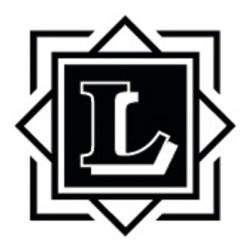B v C & ors [2021] WTLR 1
Spring 2021 #182A was survived by C, his sister; H, with whom he had had a relationship; E and F, who were the daughters of A and H; B, with whom A had also had a relationship; and G, the son of A and B. C was one of the executors of A’s will. Each of A and C owned 50% of the shares in X Ltd (the company) and on A’s death C remained a director and was in control of the company. During A’s lifetime, a property (Property 1) was acquired in his name and remained so at his death.
There were three claims following A’s death: (1) H claimed to be the beneficial owner of Property 1 (the property claim); ...
Barrett v Hammond & ors [2021] WTLR 51
Spring 2021 #182Dr Robert Munroe Black (the ‘testator’) and his wife, Beatrice Maud Black, were a childless couple who made mirror wills dated 29 September 1998. These were professionally prepared by Lucas & Co, which was subsequently taken over by Simpson Millar. Subject to the payment of several pecuniary legacies, on the death of the survivor the wills directed the division of the residuary estate into 52 parts for the benefit of six named individuals as to six parts each and a number of charities as to two parts each.
The testator and his wife amended their wills by codicils dated 2 Augus...
Re C Trust [2021] WTLR 69
Spring 2021 #182This was an application by P (a current trustee) to be appointed as sole trustee of the trust under s31(1) Trustee Act 1975 (Bermuda), and for liberty to manage the assets of the trust on the basis that it had been validly appointed as trustee by a deed dated 1 July 2015.
The trust was established by a deed dated 22 June 1965 between the settlor and the original trustee. It was a discretionary trust, with the beneficiaries including the settlor and his brothers then living or born at any time thereafter, subject to certain limitations in favour of the male line of descend...
Cheong v Cheong [2021] WTLR 79
Spring 2021 #182Shortly before his death in 1947, the deceased made a will appointing his sons as his executors and trustees (the will). Clause 3 of the will provided that, ‘If any of my Trustees disagree with the others or have to attend to other business, he is at liberty to resign and the vacancy thereby created shall be filled accordingly.’
By 2017, following a series of deeds of appointments and retirements of trustees over several decades, the trustees were three individuals. In January 2019, the plaintiff wrote to the two other trustees notifying them of his intention to retire as a truste...
Clarke-Sullivan v Clarke-Sullivan [2021] WTLR 109
Spring 2021 #182The claimant and the deceased, who both originated from New Zealand, were married. They lived in London from 2006-10 and in Dubai from 2010-15, returning to London before the deceased’s death in 2019.
In 2014, the claimant and the deceased created a discretionary trust under the laws of New Zealand, with New Zealand being the initial forum of administration (the trust). The beneficiaries included the claimant and the deceased, their future issue and organisations that were deemed to be charitable under New Zealand law. The trust was established to hold property intended to be purc...
Commissioners for HMRC v The Quentin Skinner 2005 Settlement L & ors [2021] WTLR 127
Spring 2021 #182On 30 July 2015 Mr Ludovic Skinner (LS), Mr Rollo Skinner (RS) and Mr Bruno Skinner (BS) were given interests in possession under the L Skinner Settlement, the R Skinner Settlement and the B Skinner Settlement respectively in the whole of the settled property. On 11 August 2015 Mr Quentin David Skinner (QS) gave 55,000 D ordinary shares in DPAS Ltd to each of those settlements. LS, RS and BS had, since 2011, each held 32,250 C class shares with full voting rights in the company and were also officers of DPAS Ltd from at least 2011 onwards. On 1 December 2015 the trustees of the settlemen...
Dunsby v Commissioners for Her Majesty’s Revenue and Customs [2021] WTLR 157
Spring 2021 #182This was an appeal concerning a tax avoidance scheme designed to allow shareholders in private companies to extract profits without paying income tax on them.
Prior to entering into the scheme, T was sole director and shareholder of M Ltd. The scheme had three steps:
- (1) On 11 March 2013, the board of directors of M Ltd (ie T as sole director) and T resolved to approve the creation of a new class of ‘S’ ordinary shares and the necessary amendments to M Ltd’s articles of association. On the same day, M Ltd (by resolution of T as sole shareholder) created the new S clas...
Gosden & anr v Haliwell Landau & anr [2021] WTLR 205
Spring 2021 #182The claimants brought a claim against the first defendant, a firm of solicitors, and against the second defendant, who was a partner in the first defendant firm, for damages for professional negligence in respect of a tax mitigation scheme known as an Estate Protection Scheme (EPS), by which it was intended that a property (the property) owned by the first claimant’s mother (the deceased) would pass on her death to the first claimant, with substantially less Inheritance Tax (IHT) being payable than if the property had been disposed of by will. The property remained registered in the sole...
LCR v SC & ors [2021] WTLR 229
Spring 2021 #182An 85-year-old woman (KC) executed two lasting powers of attorney (LPAs), one for the management of her property and affairs, and the other for welfare decision-making. She had been assessed, eight days prior to execution of the LPAs, by a specialist mental health practitioner as having capacity to execute the LPAs notwithstanding a diagnosis of Alzheimer’s Dementia. Both LPAs appointed all four of KC’s daughters as her attorneys. One daughter (LCR) declined to execute the LPAs, maintaining at the time that KC lacked the requisite capacity to grant the LPAs.
LCR issued an applicat...
Manton & ors v Manton [2021] WTLR 245
Spring 2021 #182The claimants were four of the five trustees of a trust. The defendant was the other trustee. The trust property included the share capital of a holding company (‘the holding company’) which in turn had a wholly owned subsidiary (‘the subsidiary’). A third company (‘the trading company’), the shares of which were also held by the holding company, occupied and traded from premises owned by the subsidiary, to which it paid rent. This, together, with distributions of profits, generated the majority of the income flowing to the trustees. In 2016, a revocable appointment of a life interest ha...

